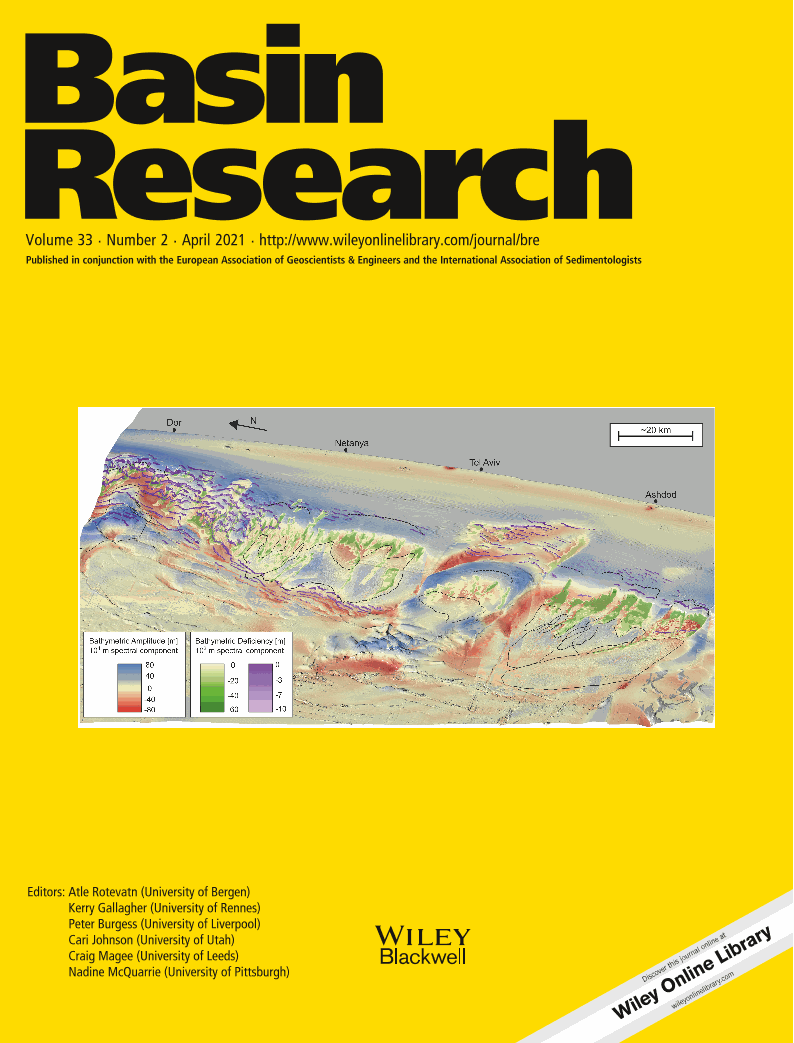
Full text loading...
 , Peter D. W. Haughton1, Patrick M. Shannon1
, Peter D. W. Haughton1, Patrick M. Shannon1
Hyperextended basins are increasingly recognized along the outboard parts of continental margins as aborted basins created during continental break‐up. Many of the concepts for understanding and modelling basin evolution and fill were developed for regions that have undergone modest crustal stretching (β < 2) and may not be valid in basins where the crust and upper mantle are heavily modified by extreme stretching. The present study uses extensive 2D and 3D seismic and well data to analyse the Late Jurassic–Cretaceous tectono‐stratigraphic evolution of the Porcupine Basin, bracketing the timing of hyperextension. It is an instructive basin, offshore west of Ireland, preserving low‐magnitude strain in the north, with increasing degrees of hyperextension in the south. Detailed mapping of strain domains (proximal, necking and hyperextended) across the Porcupine Basin reveals five main rift segments, each with a distinctive geometry and strain history. During early low‐strain rifting, inherited crustal structures strongly influenced the rift architecture by controlling the location and geometry of fault‐controlled marine depocentres. The transition from hyperextension to post‐rift subsidence was marked by locally developed, unconformity‐bounded, marine sequences that draped the underlying rift topography. Whilst these ‘transition sequences’ are dated as Tithonian above the necking domain, similar but younger Early Cretaceous transition packages developed in the hyperextended domain, suggesting extension migrated towards the rift axis during hyperextension. Early post‐rift sequences were broadly distributed across the rift centre and basin flanks before strong, thermally‐controlled subsidence of the hyperextended crust, along with hinging of the necking domain, locally to the point of slope failure, gave rise to axially‐focused marine deposition. Hyperextension may have left the basin susceptible to intra‐plate stress changes accounting for several unconformities within the post‐rift fill. This study provides an improved basin‐wide understanding of the tectono‐stratigraphic evolution of hyperextended basins.
,Conceptual model for the development of syn‐rift and transitional sequences during hyperextended rifting. During hyperextension, strain progressively localizes towards the rift axis, leading to the development of transitional depocentres above the tectonically inactive parts of the necking domain, later followed by younger transitional sequences above the hyperextended domain.

Article metrics loading...

Full text loading...
References


Data & Media loading...

